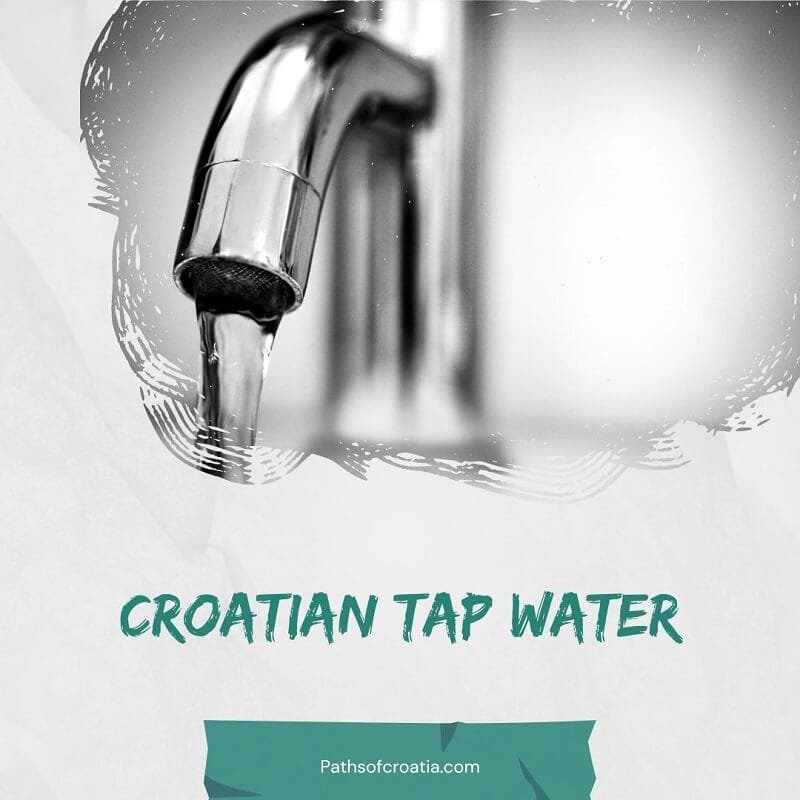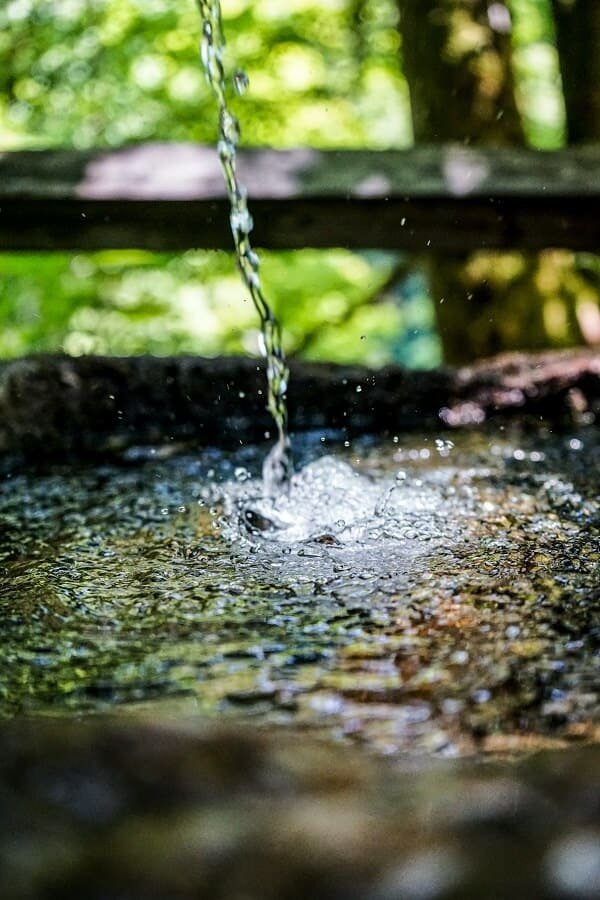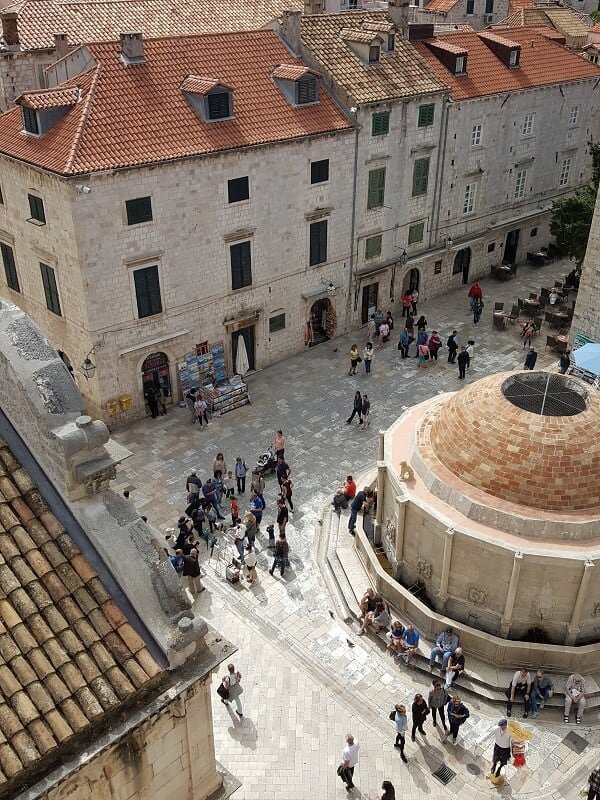
Croatia is among the top tourist attractions in Europe and the most common concern for travelers is whether tap water in Croatia is safe to drink.
I was raised in Rijeka, the 3rd biggest city in Croatia, and have never needed to buy bottled water when I could simply use water from the tap.
As a matter of fact, it’s not only that the tap water was safe but it was also super-clean in taste almost every single time.
After traveling through the rest of the state and outside of it, I can say the following about how good Croatian water is for drinking:
Croatia has among the safest, best-tasting, and cleanest tap water in Europe due to its intact water sources taken from nature. While Croatia has safe and great tap water, you’ll be able to notice minor differences in taste from region to region, depending on the filtration process and water source.
What makes Croatian water so good?
Croatia is famous for its intact, clean nature which attracts millions of people every year.
The high nature safety standards ensure that these water sources don’t get polluted.
For instance, Cres island gets its tap water from Lake Vrana (Vransko jezero) which is a protected
reservoir you can only inspect from afar. The lake is full of crystal, clean water that requires minimal filtration before it meets all standards for safe consumption.
Similarly, the rest of Croatia has other high-quality water sources from nature for which we could even assume that drinking directly from them would be safe.
Croatia is full of springs and wells
The last time I traveled to Krk island, I stopped by the road that was built in the middle of the forest, surrounded by rocks and a spring placed deep in the earth.

I reached for an empty plastic bottle I had in a car and collected the free-running water that was flowing through the rocks.
I had never had better water in my life, it was cold, fresh and so tasty that, later I heard that it was a common practice for locals and some travelers who were fortunate to hear about the spring to collect the water along the way.
Tap Water in Dubrovnik, Croatia
Dubrovnik, known for its historical charm and magnificent city walls, also provides safe tap water for consumption.
The water quality in Dubrovnik meets the standards set by the European Union, and it comes from the highly quality spring, Šumet.
Moreover, the Big Onofrio’s fountain in front of the St. Savior Church, and the Small Onofrio’s fountain under the Bell Tower near the building of the City Guard are the fountains built in the 15th century from which you can still safely drink water.

These are some of the popular tourist attractions where you can satisfy your thirst during the hot summer days and proof that Dubrovnik always cared about quality, safe water for its citizens.
Water in Split, Croatia
In Split, Croatia, tap water is generally safe to drink.
Split gets its clean tap water straight from the river Jadro, the protected ichthyological nature reserve.
The water supply undergoes regular testing and treatment processes to ensure its quality meets the necessary standards.
The local authorities monitor the water quality and maintain the distribution network to provide safe drinking water to residents and visitors alike.
Tap Water in Zadar, Croatia
Zadar, a coastal city rich in history and natural beauty, offers tap water that is safe to drink from the Vransko Lake.
Zadar’s water supply is continuously checked for impurities and contaminants, ensuring that residents and tourists can enjoy safe drinking water.
While until recently, Zadar had 5 historically important wells in the town, yet the wells were empty and unusable.
Fortunately, In 2023, Zadar installed modern water taps in the town the public can use.
Tap Water in Pula, Croatia
Pula, a charming city known for its well-preserved Roman Colosseum, provides tap water that is generally safe for consumption.
The local water supply which comes from Buzet is treated and monitored to ensure its quality meets the required standards.
You can find working public tap water in the town’s marketplace and near the historical landmark Prolaz sv. Teodora in the old town.
Tap Water in Zagreb, Croatia
Zagreb, the capital city and the biggest city of Croatia with almost 1 million citizens has tap water that is safe to drink.
Zagreb gets its water from the river Sava, which flows through alluvium and goes through a natural process of filtration.
It is said that Zagreb likely has the best quality water compared to other big cities in Europe.
Tap Water in Hvar, Croatia
Hvar, a stunning island destination known for its vibrant nightlife and beautiful beaches, provides safe water from Libora well, and the river Cetina.
The water quality is monitored and treated to meet the required standards. Hvar’s tap water is considered safe for consumption by both residents and visitors.
You can find 3 old public water taps in the town, but I am not sure if are they all working at the moment.
Tap Water in Brač, Croatia
Brač, another popular island in Croatia, offers tap water that is safe for drinking from the river Cetina.
Brač’s tap water meets the necessary standards and is considered safe by residents and tourists alike.
Tips for the end
Let me give you a few tips and recommendations for the end that will answer the remaining questions you may have regarding Croatian water.
Is bottled water easily accessible in Croatia?
Yes, bottled water is widely available in shops, supermarkets, and restaurants throughout Croatia.
Ask for a glass of water when thirsty
If you feel thirsty, you can also politely ask for water from nearby restaurants, bars, and café instead of purchasing a bottle.
Most places in Croatia don’t charge anything extra for tap water they serve you along with the coffee or if you ask.
However, if you just order water without saying you want it from the tap, they’ll likely serve you premium-paid water.
Feel free to use tap water for brushing your teeth
Tap water in Croatia is generally safe for oral hygiene purposes just as it’s safe for any other consumption method.
Don’t worry about white-colored water
Sometimes during rainy periods, the pressure in the pipes can increase and thus send abnormal amounts of oxygen into the water.
So, the water in a glass could look white, almost milk-like for a minute before the tiny bubbles of oxygen disappear into the air.
This is normal, and there’s nothing to worry about.
